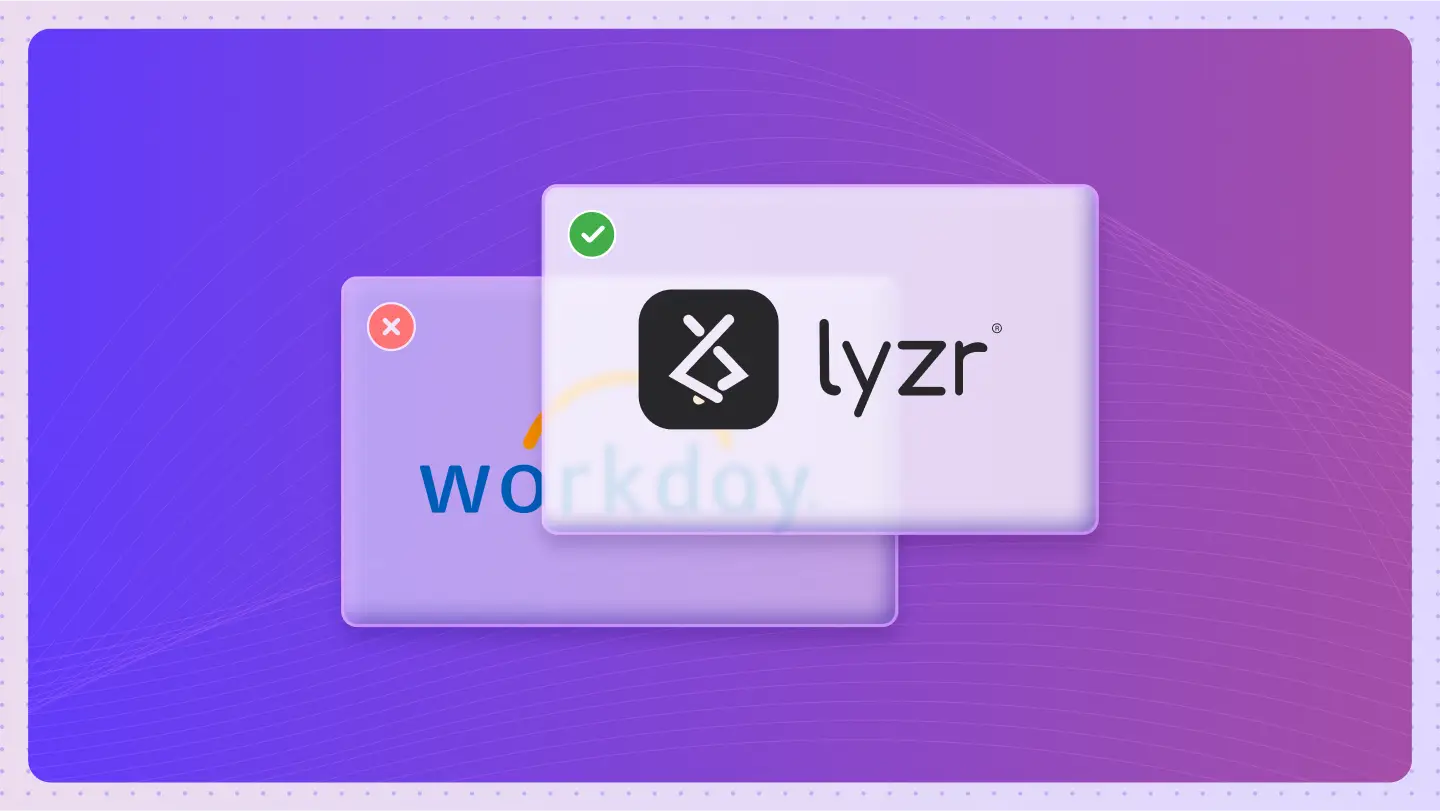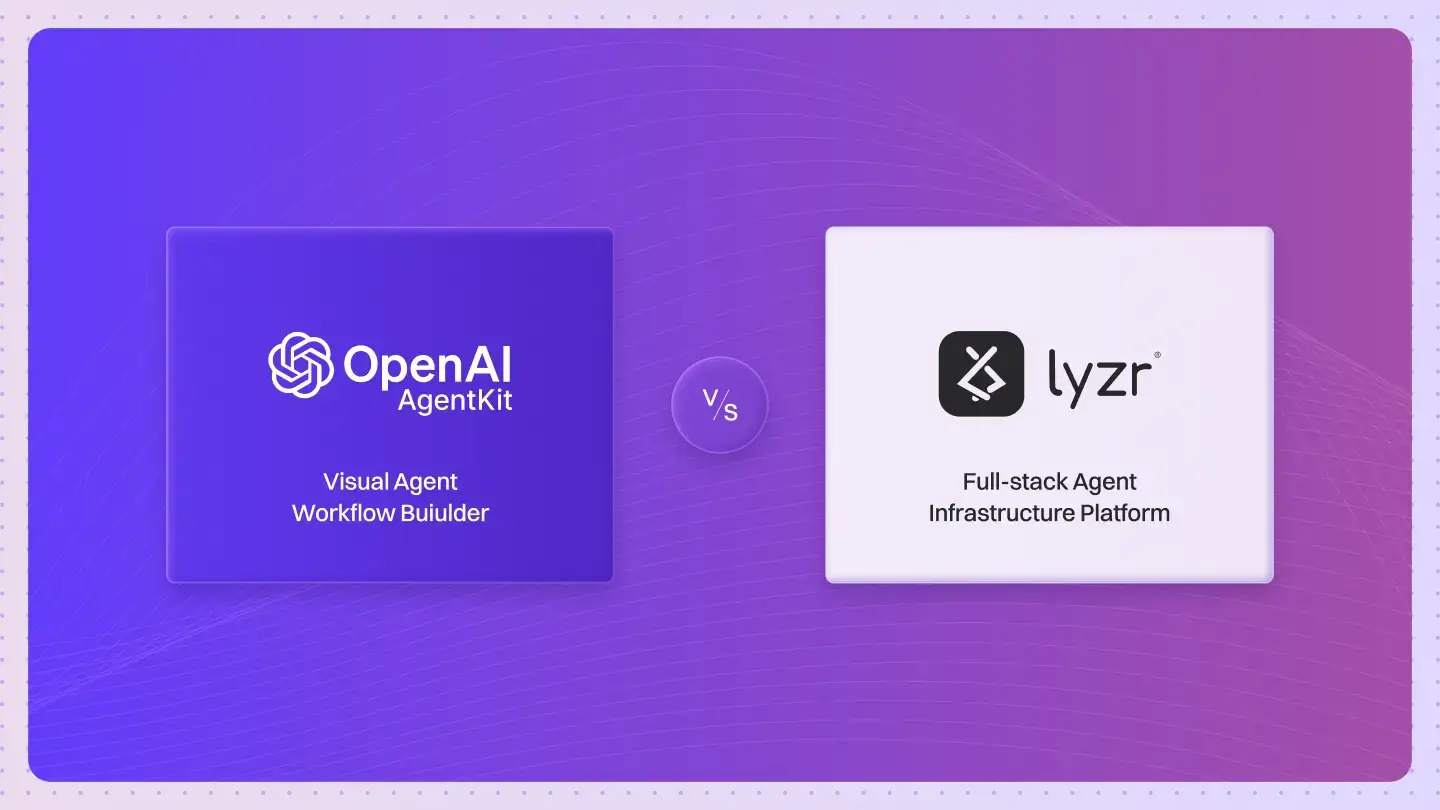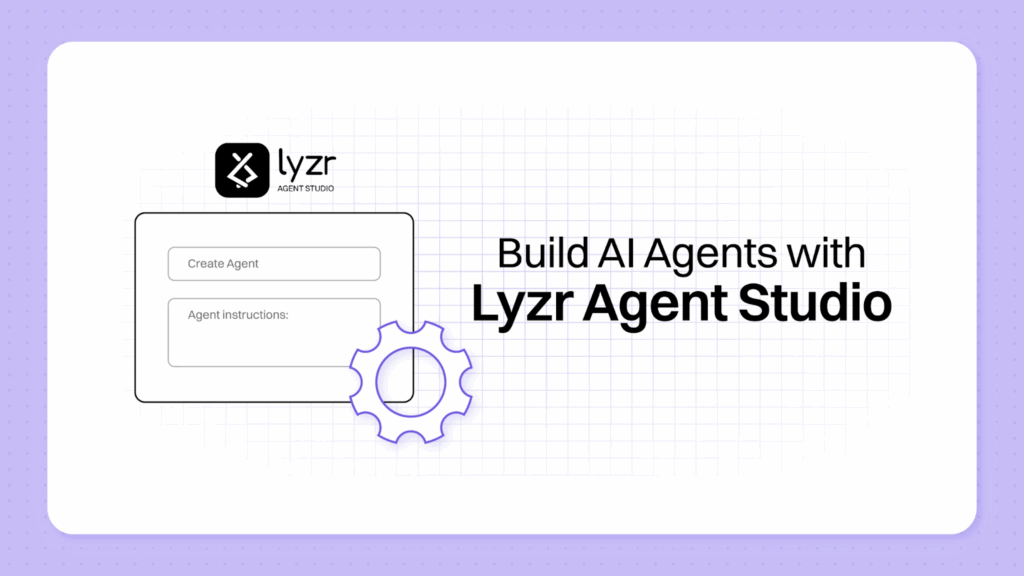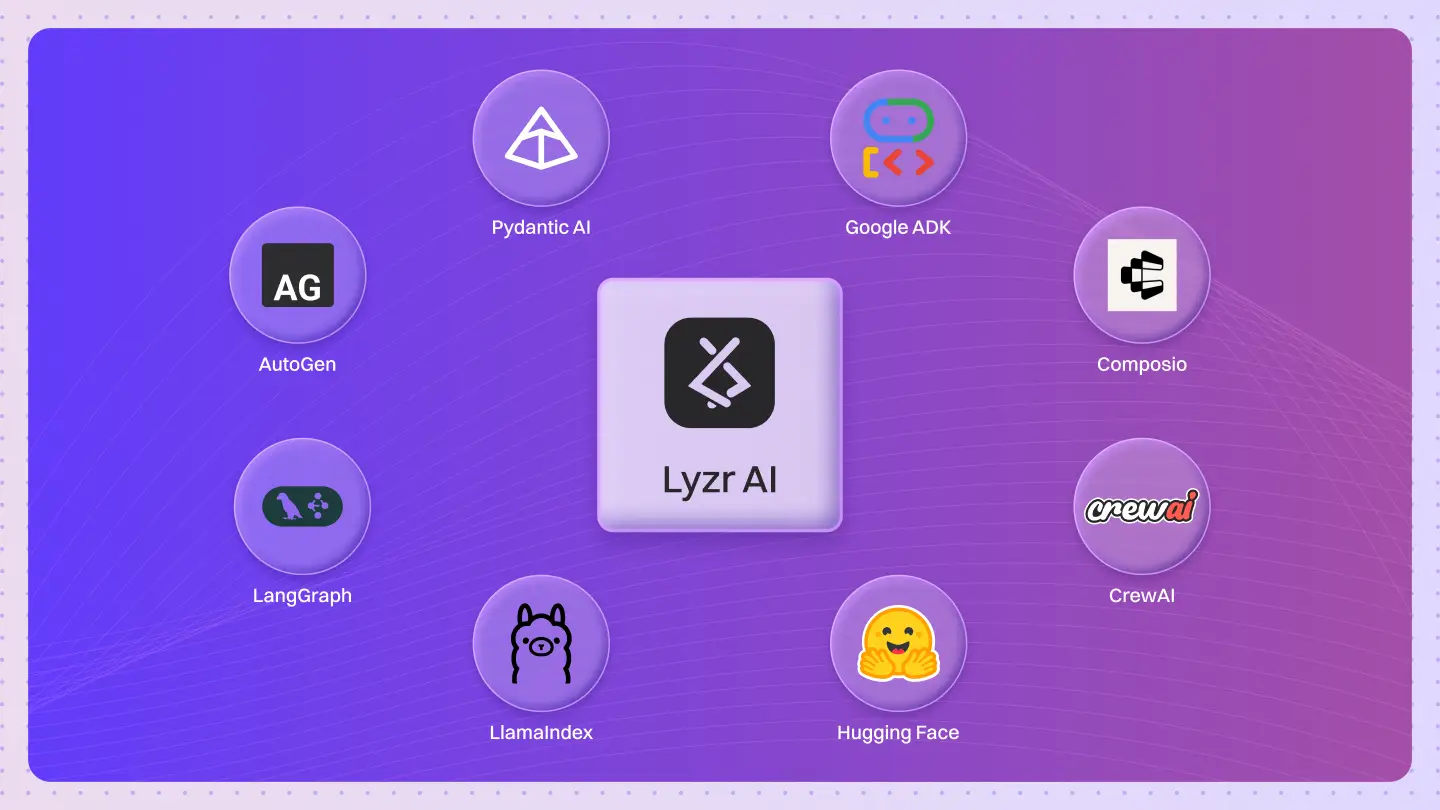Table of Contents
ToggleIf you’ve landed here, chances are you’ve already tried building an agent with OpenAI’s Agent Builder.
Maybe your workflow ran smoothly the first time, until you needed your agent to do more than just follow a linear path. Maybe you wanted it to query data, make decisions, or manage multiple tasks in parallel. That’s when you realized: simplicity has its limits.
That’s exactly where Lyzr enters the picture.
While OpenAI’s Agent Builder makes it easy to create functional agents through predefined workflows, Lyzr takes a developer-first route, letting you build programmable, adaptive, and enterprise-ready agents.
Instead of sticking to a single path, your agents can now reason, collaborate, and even recover when a model goes down.
Both tools were built to simplify how we design AI systems. The difference lies in what happens after the setup, when the agent needs to act with context, connect with data, and scale securely.
Let’s see head on head differences the two
How They Approach Agent Building
To see where OpenAI Agent Builder and Lyzr start to diverge, it helps to look at how each defines an agent, and what they expect that agent to do.
OpenAI’s Approach: Workflows Over Autonomy
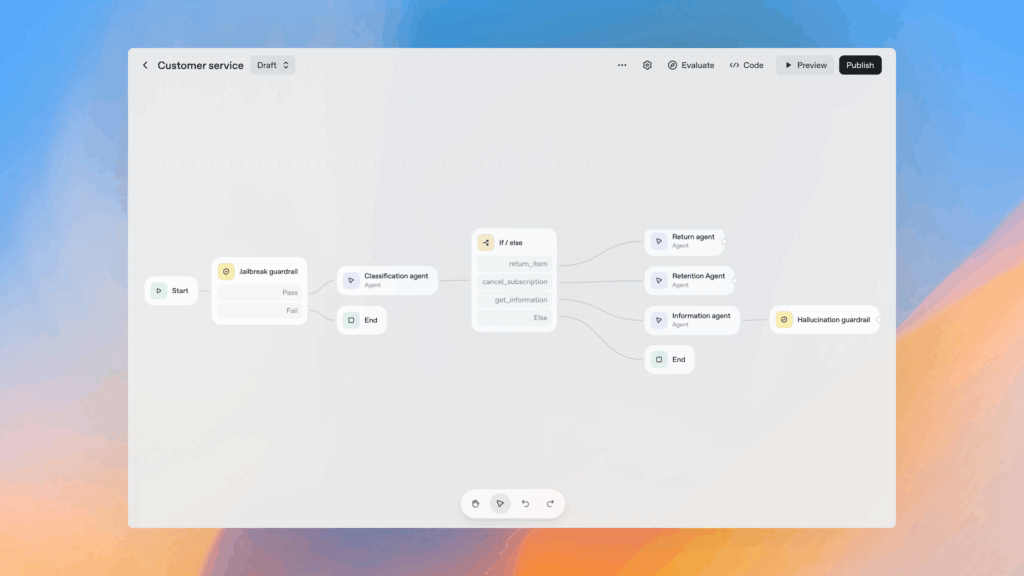
With OpenAI, everything begins with a workflow.
- You set a goal, define a few steps, and the agent runs them in sequence.
- Each task executes cleanly, a simple, deterministic process.
- Perfect for:
- Customer support bots
- FAQ or knowledge-based assistants
- One-time automated actions
There’s no mechanism for:
- Dynamic reasoning (changing decisions mid-flow)
- Multi-agent collaboration
- Context-based re-routing
Every agent is a one-shot performer, efficient but confined to its predefined path.
Lyzr’s Approach: Agents Over Workflows
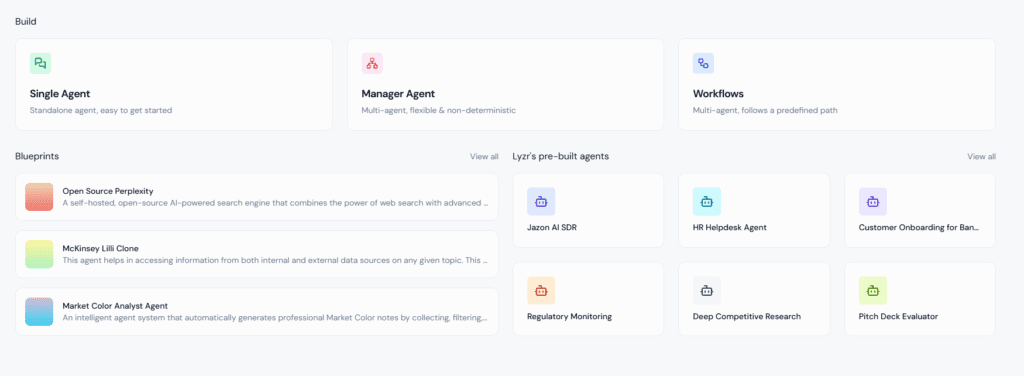
Instead of building workflows that use agents, it builds agents that create and manage workflows.
- You can design single agents, manager agents, and workflow agents, all communicating and delegating dynamically.
- Each agent can decide what to do next, call another agent, or loop back to refine results.
- The system supports deterministic and nondeterministic execution paths.
Here’s how they differ at a glance:
| Feature | OpenAI Agent Builder | Lyzr |
|---|---|---|
| Core Logic | Predefined workflows | Adaptive agent orchestration |
| Execution Type | Deterministic | Deterministic + Nondeterministic |
| Autonomy | Limited | High (agents can reason + delegate) |
| Use Case Fit | Simple, goal-based automation | Complex, dynamic, enterprise logic |
From Workflows to Intelligence
| Feature | OpenAI Agent Builder | Lyzr |
|---|---|---|
| Multi-agent coordination | ❌ | ✅ |
| Adaptive routing | ❌ | ✅ |
| Multi-model support | ❌ | ✅ |
| Auto-failover | ❌ | ✅ |
| Programmatic execution | ❌ | ✅ |
Looking at the table, the difference is immediately clear: OpenAI focuses on linear workflows, while Lyzr is built for dynamic, adaptive intelligence.
OpenAI agents execute tasks step by step. You set a goal, define tasks, and the agent runs them in sequence.
This works well for simple automation, like FAQ bots or structured support workflows. But if the scenario requires branching logic or context-aware reasoning, the workflow quickly reaches its limits. Every workflow is essentially one-shot, if conditions change, it restarts from the beginning.
Lyzr approaches the problem differently. Here, agents are programmable and collaborative, capable of calling other agents, looping through tasks, or adapting based on outcomes.
Developers can orchestrate single agents, manager agents, and workflow agents together, blending deterministic and nondeterministic flows.
Additional advantages that Lyzr brings to the table:
- Multi-model support: dynamically choose Anthropic, Google, Perplexity, or any other model
- Auto-failover: if one model or service is down, agents switch automatically, no interruptions
- Programmatic control: developers decide when and how each agent runs
Enterprise-Ready Agents
| Feature | OpenAI Agent Builder | Lyzr |
|---|---|---|
| Database connectivity | ❌ | ✅ (Text-to-SQL, structured DBs like Postgres, MS SQL) |
| Knowledge graph support | ❌ | ✅ (advanced knowledge base integration) |
| Voice capabilities | ✅ | ✅ |
| On-prem deployment | ❌ | ✅ |
| Custom API integration | ❌ | ✅ |
For enterprises, flexibility and control are essential. Here’s how the two platforms compare:
- Database connectivity: Lyzr connects to structured databases, enabling text-to-SQL agents that query, update, or manipulate enterprise data directly. OpenAI lacks native database integration, limiting complex workflows.
- Knowledge graphs: Lyzr supports advanced knowledge bases, allowing agents to reason over interconnected data. OpenAI does not provide native knowledge graph support, which can restrict context-aware decision-making.
- Voice capabilities: Both platforms support voice interaction, making agents suitable for interactive or hands-free workflows.
- Deployment flexibility: Lyzr supports on-prem deployments, ensuring data privacy, compliance, and security, crucial for industries like finance and healthcare. OpenAI is cloud-only, which may not meet strict enterprise requirements.
- Custom API integrations: Lyzr allows easier integration with internal enterprise APIs, enabling agents to fetch or update data from custom systems. OpenAI offers limited out-of-the-box integrations, relying heavily on pre-built tools.
Collaboration, Marketplace, and Security
| Feature | OpenAI Agent Builder | Lyzr |
|---|---|---|
| Team collaboration | ❌ | ✅ (share agents and workflows, multiple contributors) |
| Agent marketplace / sharing | ❌ | ✅ (publish and share agents with community) |
| Guardrails & safety | ❌ / basic | ✅ (advanced, natively integrated) |
| Compliance & privacy | Limited | ✅ (on-prem deployment, enterprise controls) |
Enterprises don’t just need smart agents, they need teams to collaborate, share knowledge, and operate safely.
- Team collaboration: Lyzr allows multiple people to work on the same agents or workflows simultaneously, making it ideal for enterprise teams that iterate quickly. OpenAI currently lacks built-in collaborative features, making teamwork less seamless.
- Agent marketplace and sharing: Lyzr supports a community-driven marketplace, letting organizations publish agents, share workflows, and leverage existing solutions. OpenAI doesn’t have a public marketplace yet, so knowledge sharing happens in isolation.
- Guardrails and safety: Lyzr comes with advanced, natively integrated guardrails, reducing hallucinations, enforcing safety policies, and mitigating toxic outputs. OpenAI provides basic guardrails, but enterprises may need more robust safety layers.
Which Platform to Choose??
Choosing the right agent-building platform depends on your goals, technical needs, and scale. The table below summarizes the key differentiators:
| Category | OpenAI Agent Builder | Lyzr |
|---|---|---|
| Workflow complexity | Simple, linear workflows | Complex, adaptive, multi-agent orchestration |
| Model flexibility | Single model per agent | Multi-model support with auto-failover |
| Enterprise readiness | Limited | Text-to-SQL, knowledge graphs, on-prem, API integration |
| Collaboration & sharing | ❌ | ✅ (team collaboration, marketplace) |
| Safety & governance | Basic guardrails | ✅ Advanced, natively integrated |
| Deployment options | Cloud-only | ✅ Cloud or on-prem |
When OpenAI Agent Builder fits:
- Quick prototypes or proof-of-concept workflows
- Simple, linear tasks with minimal branching
- Teams that do not need enterprise integrations or collaboration
When Lyzr is ideal:
- Enterprises requiring multi-agent orchestration with adaptive flows
- Organizations that need database connectivity, knowledge graphs, and API integrations
- Teams working collaboratively on agents and workflows
- Scenarios demanding advanced guardrails, compliance, and secure deployment
Choosing the Right Agent Platform for Your Needs
Landing here means you’ve explored both platforms and are looking for a solution that goes beyond basic workflow automation. The choice ultimately depends on complexity, flexibility, and enterprise requirements.
OpenAI Agent Builder is best suited for simple, linear workflows and quick prototypes. Its limited collaboration, integrations, and enterprise features make it ideal for teams focused on speed and simplicity rather than scale.
Lyzr, on the other hand, is designed for multi-agent orchestration, adaptive flows, and enterprise-grade automation.
It supports database connections, knowledge graphs, advanced guardrails, and on-prem deployment, while enabling team collaboration and agent sharing, making large-scale projects manageable and secure.
Ready to see Lyzr in action? Book a demo today and discover how your enterprise can build smarter, safer, and collaborative AI agents.
Book A Demo: Click Here
Join our Slack: Click Here
Link to our GitHub: Click Here





